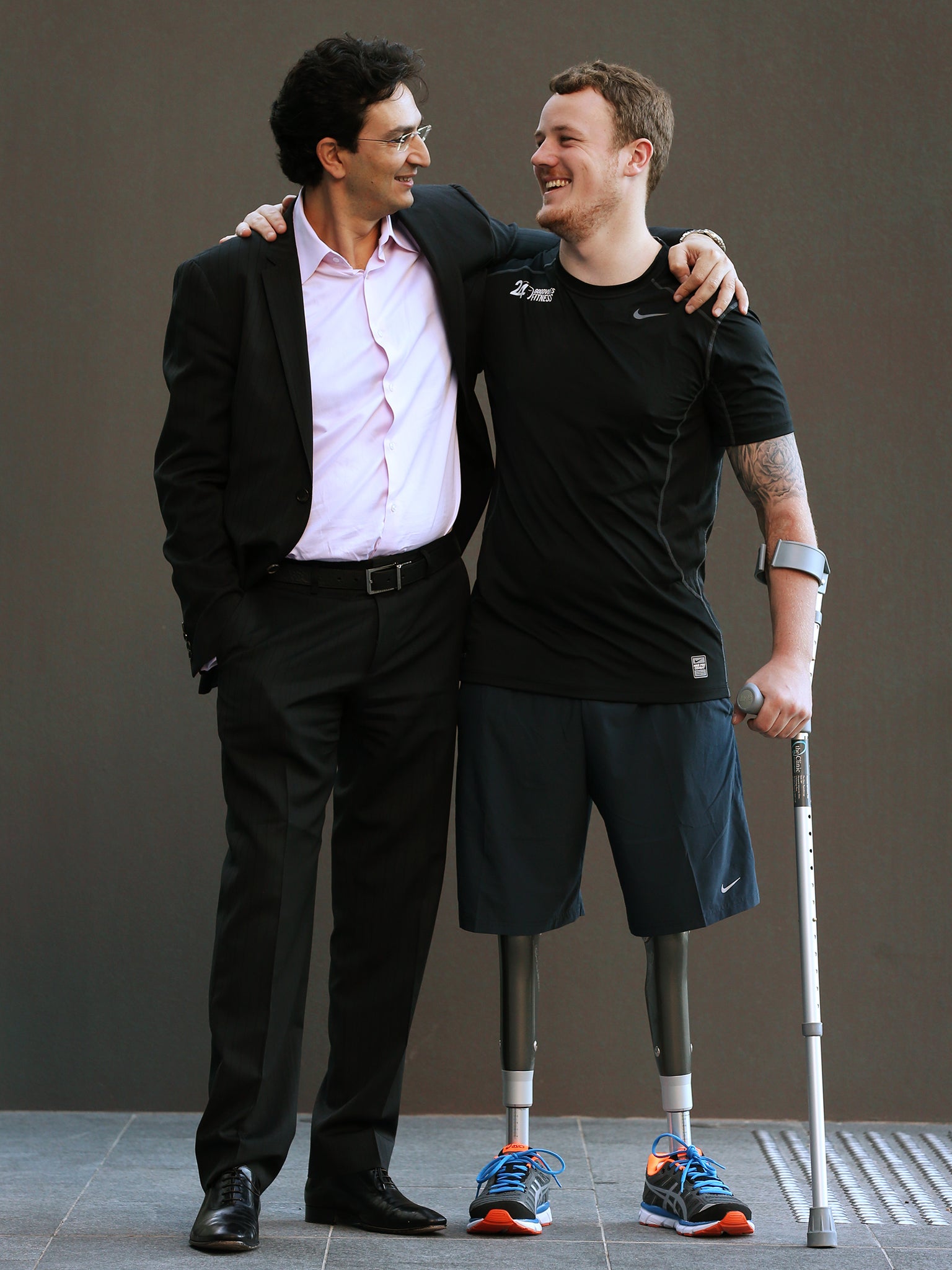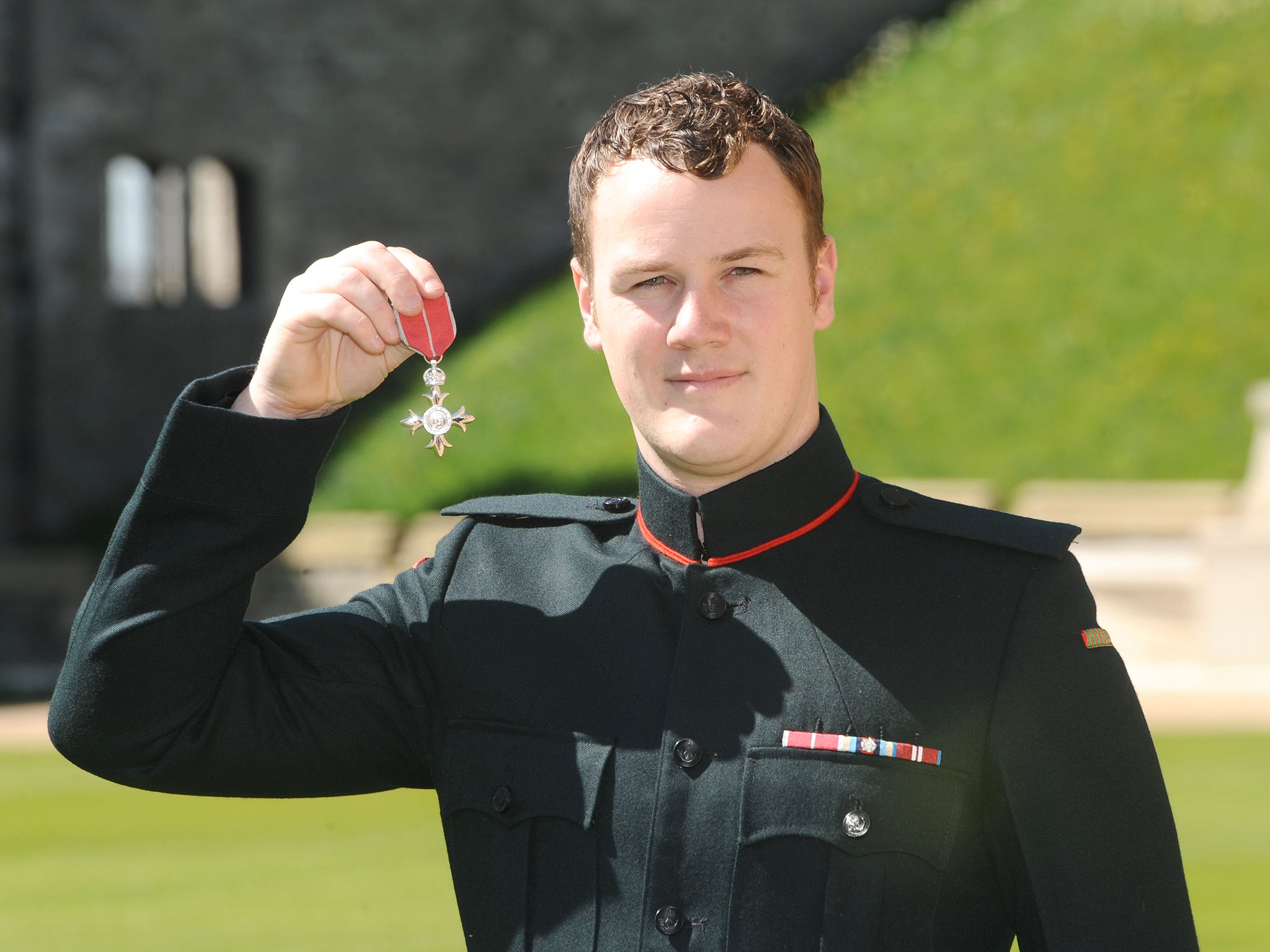Iraqi-born doctor leads scheme helping British military amputees walk again
An Iraqi-born surgeon who refused orders to mutilate his own people has come to the aid of British military amputees

Your support helps us to tell the story
From reproductive rights to climate change to Big Tech, The Independent is on the ground when the story is developing. Whether it's investigating the financials of Elon Musk's pro-Trump PAC or producing our latest documentary, 'The A Word', which shines a light on the American women fighting for reproductive rights, we know how important it is to parse out the facts from the messaging.
At such a critical moment in US history, we need reporters on the ground. Your donation allows us to keep sending journalists to speak to both sides of the story.
The Independent is trusted by Americans across the entire political spectrum. And unlike many other quality news outlets, we choose not to lock Americans out of our reporting and analysis with paywalls. We believe quality journalism should be available to everyone, paid for by those who can afford it.
Your support makes all the difference.British soldiers who have lost their legs in battle are set to benefit from a life-changing operation to get them walking again which is being led by an Iraqi surgeon inspired by the first Terminator film.
The Ministry of Defence (MoD) is spending £2m on trials that will begin next year and involve 20 amputees who will have a procedure known as direct skeletal fixation, or osseointegration.
The technique does away with the need for traditional prosthetics, as a titanium implant is fitted directly into the bone and an artificial leg connected to it. It is a significant departure from the current approach, used for hundreds of years, of fitting a socket on to a stump.
Dr Munjed Al Muderis, an Iraqi-born orthopaedic surgeon based in Sydney, is a world expert in the technique, having carried out more than 180 operations.
The 43-year-old fled Iraq in 1999, after refusing to cut off the ears of army deserters. When he started a new life in Australia, he trained as an orthopaedic surgeon and is now chairman of the Osseointegration Group of Australia. He is to come to Britain next April to supervise several operations at Queen Elizabeth Hospital Birmingham (QEHB).

“It’s a single operation similar to a hip or knee replacement and the patient walks straight-away,” he told The Independent on Sunday. “Problems with sockets include significant chafing, rubbing, friction, excoriation, ulcers, infections – but this is eliminated.”
“Believe it or not, I came up with this idea about osseointegration when I was a teenager – I watched The Terminator and I always was fascinated by a half human, half machine”.
Some 95 per cent of those who have had both legs amputated above the knee end up in a wheelchair. The MoD’s decision to fund the new trial comes after what defence officials describe as “encouraging results” involving a handful of British service personnel who have already had the procedure.
“My hope is that after this trial has proven to be successful this will be rolled out and be available on the NHS for thousands of amputees in the United Kingdom. It does transform lives. I have a lot of patients who were wheelchair-bound and unemployed become functional and return to work,” said Dr Al Muderis, who is an associate professor at school of medicine at the University of Notre Dame Australia. He will be working alongside experts from the Royal Centre for Defence Medicine and the Defence Medical Rehabilitation Centre (DMRC) Headley Court.
“Due to the nature of their injuries, some patients have great difficulty in obtaining a good fit from their socket, the traditional method utilised for attaching their prosthetic limb. As a result, they are unable to either walk as much as they would like or have to resort to life in a wheelchair,” said Surgeon Captain Paul Hughes, commanding officer, DMRC Headley Court. The new technique offers a “potential solution”, he said.
And, he added, the £2m funding for the trial provides “a fantastic opportunity to evaluate the effectiveness of direct skeletal fixation for a cohort of up to 20 serving personnel and veterans who are experiencing difficulties with their current provision of prosthetics”.
Since 2001, more than 360 British service personnel have had amputations. Defence minister Mark Lancaster said: “We want our personnel to know that we appreciate they risk injury while defending the nation and that we will support their needs. It is also important that this trial extends to some of our most seriously injured veterans.”
The new approach could benefit civilian patients as well as soldiers and veterans, according to defence officials, and NHS England has commissioned a study to evaluate the success of the procedure.
In a statement, a spokesperson for University Hospitals Birmingham NHS Foundation Trust said: “Patients will have the surgery and early stages of rehabilitation at the QEHB supported by the combined military and NHS teams before moving to Headley Court [in Surrey] for ongoing care. Patients who have already undergone the procedure have described it as life-changing with huge improvements to their mobility and their quality of life.
“As a Major Trauma Centre, we see a number of severely injured civilian patients who could also benefit from this treatment and we remain committed to exploring this in the future.”
‘I expected months on crutches. But in three weeks, I was walking unaided’
Michael Swain, 25, from Bedfordshire, lost both his legs in a bomb blast while serving with 3rd Battalion The Rifles in Helmand province, Afghanistan, six years ago.
After struggling with traditional prosthetics, he became the first British soldier to have the osseointegration procedure – performed by Dr Munjed Al Muderis (left, with Swain) in Australia, and completed in early 2014.
“Before, I was wheelchair bound ... but since, I’ve gone to being fully mobile. The biggest difference is normality .... your weight distribution can go up or down and they still fit because they are through the bone, not the skin,” said Mr Swain, who left the Army last year. He is now a motivational speaker.
“I thought I’d spend three months on two crutches, then six months on one .... But after about three weeks I was able to walk unaided. It’s fantastic. It eliminates the socket so it eliminates discomfort, sweating, irritation, and infection. I did a talk the other day – one of the questions was, ‘How many days this year have you spent off your legs?’. I replied, ‘Once ... because I had a really bad hangover.’ It would be great for osseointegration to be an option on the NHS.”
For more information about Michael Swain go to: wemakewaves.com
Join our commenting forum
Join thought-provoking conversations, follow other Independent readers and see their replies
Comments